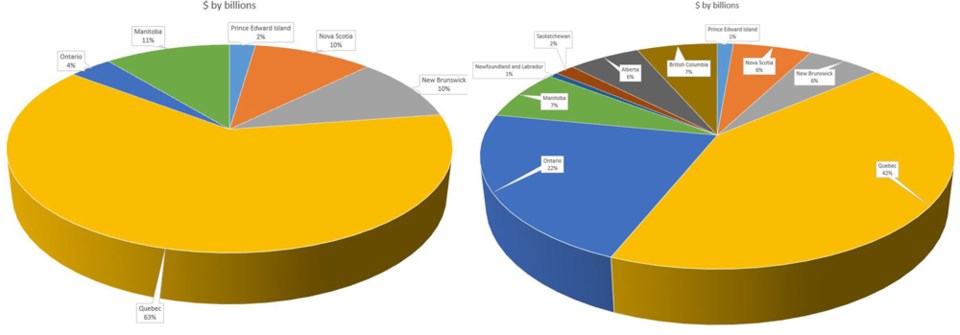Every year the federal government hands out equalization payments to some of Canada’s lesser financial provinces.
And in recent weeks, months, and years, Canadian premiers are speaking out against what they deem an antiquated system, including Saskatchewan’s Scott Moe.
Provinces do not always receive equalization year-over-year, nor are they left without each year. In total, the federal government has announced they will be providing $18.958 billion in equalization payments to the six provinces in the 2018-2019 fiscal year.
Saskatchewan has been an equalization recipient in approximately 40 of the 60 years of the program, but since 2000 have been fluctuating in and out.
The province has not received equalization payments since their last payment in 2007-2008.
The province announced the budget year’s revenues at $14.02 billion, while expenses finished at $14.32 billion, leaving the province’s deficit at $303 million, a $393 million drop from their originally budgeted deficit of nearly $700 million.
The province says plans to reach a balanced budget remain on course for 2019-2020.
Premier Scott Moe and his government recently proposed a new formula, which would see all of the provinces guaranteed to benefit from the program every year.
Under the SaskParty proposal, the six provinces who are currently receiving equalization would still receive their share of the equalization program, but only 50 per cent of their funding, with $9.479 million dispersed.
The remaining 50 per cent of the equalization payment would be dispersed to each province based on population.
Under that plan the four provinces who do not receive equalization would receive a combined $2.788 billion, including just over $300 million for Saskatchewan. The remaining six provinces would see their share fall from $18.958 billion to $16.140 billion.
“It still is a very low payment when compared to some of the other provinces but is significant for Saskatchewan because we’re still in a situation where our renewable resource revenues are down about $1 billion compared to what they were four years ago,” says Minister of Finance and Humboldt MLA Donna Harpauer.
What exactly would the government do with an extra $300 million?
“We’d be balanced,” says Harpauer.
While the program has not been kind to Saskatchewan in recent years, the province has benefitted from the program for approximately two-thirds of the programs existence. But the Saskatchewan Party says of the more than $430 billion handed out by the program, less than two per cent of it went to Saskatchewan, a figure they feel is unfair to their taxpayers.
Concerns regarding the equalization program have been growing in recent years, says Harpauer.
A lack of responsiveness from the program is a major concern, she says, who says that with a three-year rolling average provinces like Alberta, Saskatchewan, and Newfoundland and Labrador, who have been hit hard by lower commodity prices particularly in oil, are not being compensated accordingly.
“The equalization doesn’t respond to that downturn, while the provinces themselves are struggling to find the money for their services,” she says.
Equalization payments are determined through a complex formula, which calculates the fiscal capacity for each province at a certain tax rate.
“If you put the same percentage of tax in all the provinces how much money could you generate?” said Daniel Beland, a faculty member with the Johnson Shoyama Graduate School of Public Policy with the University of Saskatchewan.
“It’s not the money that they actually collect, it’s the money that they could collect if the rates were the same across the country.”



